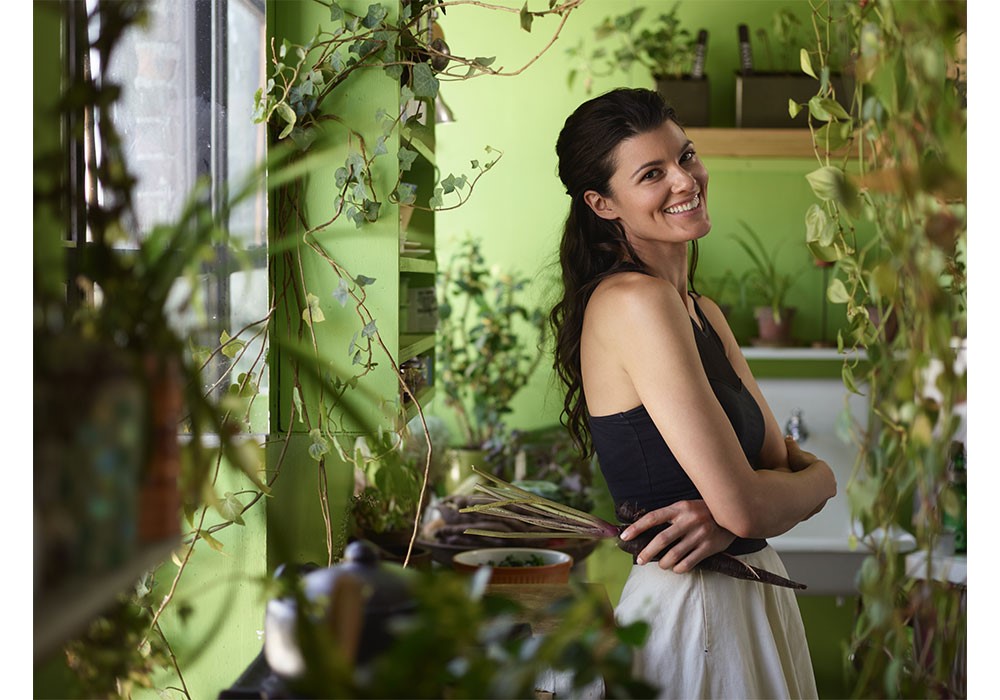
Editor’s note: This is a guest post by Brooklyn’s Summer Rayne Oakes, environmentalist, author and eco-model who advocates for the beauty and healing elements of common houseplants.
How many of us have walked into our local plant shop just to have a look around – and walked out with a plant that we just “had to have?” It’s easy enough to do. Plants seem to instantly bring joy to a space, and better yet — if you know how to care for them, then you may find yourself becoming a very proficient plant parent who begins to pay more intentional visits to the plant store.
While writing my book, “How to Make a Plant Love You: Cultivate Green Space in Your Home and Heart,” I opened up a question to my community to see how their plants have helped them — whether it be through a bad break-up, a move to a new city, or even beating the winter blues. The stories were different, but the results were very much the same. Plants really can bring joy and this is one of the reasons why it’s easy to begin to want to fill your home with green.
For most of us, one plant may be enough. For many, it may be a little more and still for some, the philosophy of “you can never have enough houseplants” is gospel. The key to creating your little sanctuary of green, however, is to start somewhere and that somewhere often starts with knowing your space.
Finding the right plant for your space is critical because it not only helps set you up for success, but builds up your confidence in caring for plants. Ways in which to do that involve some of the following steps:
- Knowing the quality, quantity, and intensity of light in your space, (which is linked to knowing what direction your windows face);
- Asking yourself what kind of “plant parent” you will be. For instance, are you someone who is a very attentive caretaker, or do you want to be more hands-off?
- Lastly, what types of plants appeal to you from an aesthetic point of view?
When you start to answer all these questions, you’ll be able to find the most suitable plants for your space, your lifestyle, and your personal preferences and will ultimately be more equipped to pick the most appropriate plant when you visit a plant store.
Believe it or not, my plant journey, (which now consists of over 1,100 plants in my Brooklyn apartment), started like almost everybody’s. I was bringing one plant home and noticing the difference that it brought to my space and how it positively influenced my relationship to my home.
Introducing a plant into its new environment can be a wonderful experience. When I place a plant in its new home, I often stand there — not only to look at how it fits into its environment, but also admiring it, as if I’m looking at it for the very first time.
Acclimating a plant to one’s home on the other hand can cause some anxiety, and it’s not something that is often shared by shop owners and workers when a customer comes to buy a plant. Most plants for purchase are grown in greenhouses and nurseries and are given optimal conditions — great light, timed watering, optimal humidity, airflow, etc.. And when we bring them home — if they aren’t given similar conditions — it can lead to significant leaf drop, browning of leaves, spindly growth, and sometimes even death.
In many ways, we have to not only be more aware of this as a possibility, observant enough to be able to react (and potentially find a better place for our plants), but also accept that the plants we live with may not look exactly like the ones we originally bought — and that’s OK.
I’d argue that the core of creating your own green sanctuary is not necessarily about having picture-perfect plants in oh-so-perfect places, but enjoying the process of having and caring for plants in your life and creating a sanctuary both within you and around you. If you start from there, then you’ll intuitively know what is the right amount of plants for you in your life and in your space; and then you’ll truly get many of the benefits that plants can bring to you.
—–
Summer Rayne Oakes finds joy caring for over 1,100 plants in her Brooklyn apartment. She is the author of How to Make a Plant Love You: Cultivate Green Space in Your Home and Heart; host of Plant One On Me on YouTube; and founder of the Houseplant Masterclass and Homestead Brooklyn. You can follow her personal plant journeys on Instagram @homesteadbrooklyn.









